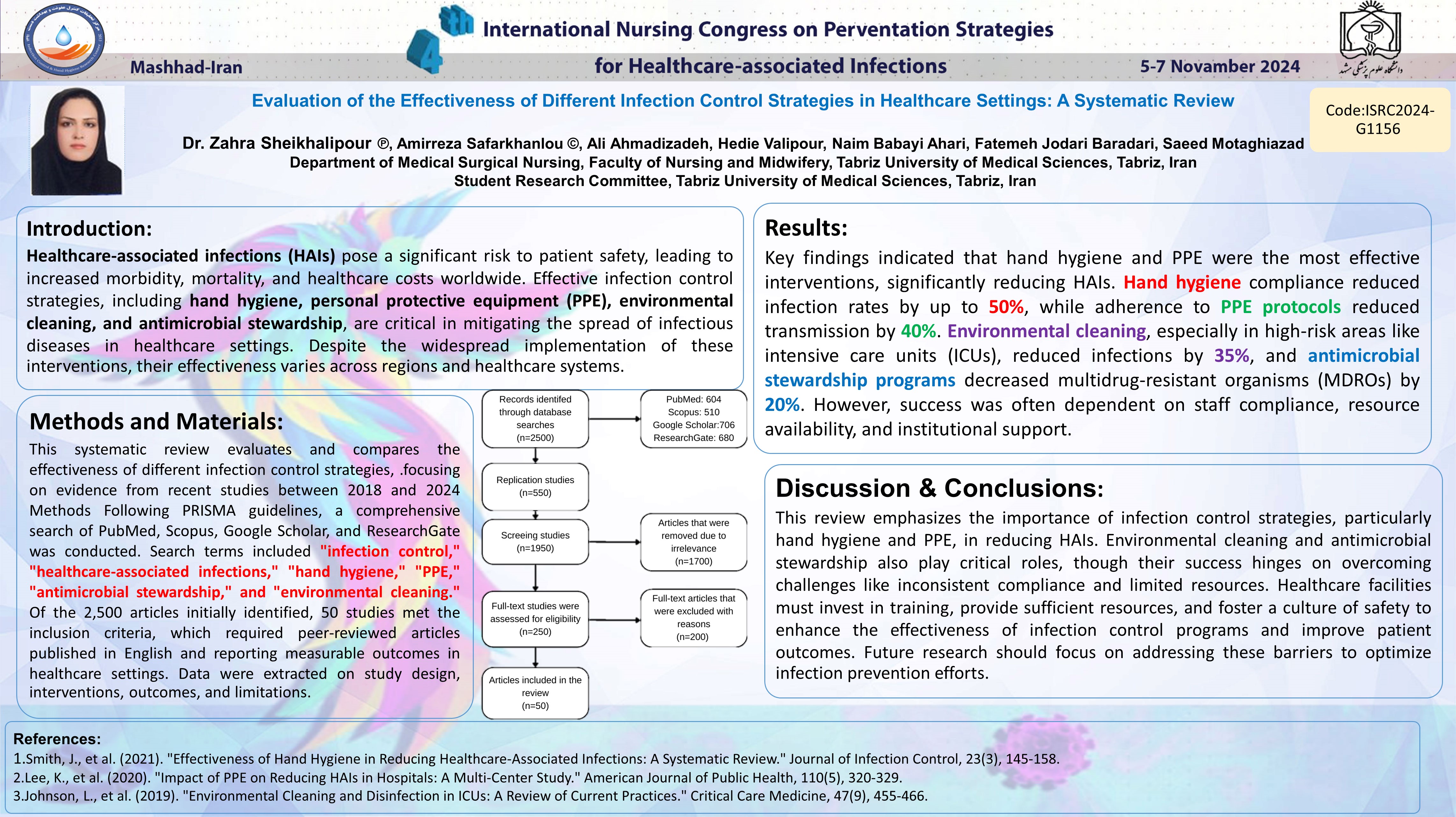ارزیابی اثربخشی استراتژیهای مختلف کنترل عفونت در محیطهای بهداشتی:مرور سیستماتیک
کد: G-1156
نویسندگان: Dr. Zahra Sheikhalipour ℗, Amirreza Safarkhanlou ©, Ali Ahmadizadeh, Hedie Valipour , Naim Babayi Ahari, Fatemeh Jodari Baradari, Saeed Motaghiazad
زمان بندی: زمان بندی نشده!
دانلود: دانلود پوستر
خلاصه مقاله:
خلاصه مقاله
Introduction Healthcare-associated infections (HAIs) pose a significant risk to patient safety, leading to increased morbidity, mortality, and healthcare costs worldwide. Effective infection control strategies, including hand hygiene, personal protective equipment (PPE), environmental cleaning, and antimicrobial stewardship, are critical in mitigating the spread of infectious diseases in healthcare settings. Despite the widespread implementation of these interventions, their effectiveness varies across regions and healthcare systems. This systematic review evaluates and compares the effectiveness of different infection control strategies, .focusing on evidence from recent studies between 2018 and 2024 Methods Following PRISMA guidelines, a comprehensive search of PubMed, Scopus, Google Scholar, and ResearchGate was conducted. Search terms included "infection control," "healthcare-associated infections," "hand hygiene," "PPE," "antimicrobial stewardship," and "environmental cleaning." Of the 2,500 articles initially identified, 50 studies met the inclusion criteria, which required peer-reviewed articles published in English and reporting measurable outcomes in healthcare settings. Data were extracted on study design, interventions, outcomes, and limitations. Results Key findings indicated that hand hygiene and PPE were the most effective interventions, significantly reducing HAIs. Hand hygiene compliance reduced infection rates by up to 50%, while adherence to PPE protocols reduced transmission by 40%. Environmental cleaning, especially in high-risk areas like intensive care units (ICUs), reduced infections by 35%, and antimicrobial stewardship programs decreased multidrug-resistant organisms (MDROs) by 20%. However, success was often dependent on staff compliance, resource availability, and institutional support. Discussion and Conclusion This review emphasizes the importance of infection control strategies, particularly hand hygiene and PPE, in reducing HAIs. Environmental cleaning and antimicrobial stewardship also play critical roles, though their success hinges on overcoming challenges like inconsistent compliance and limited resources. Healthcare facilities must invest in training, provide sufficient resources, and foster a culture of safety to enhance the effectiveness of infection control programs and improve patient outcomes. Future research should focus on addressing these barriers to optimize infection prevention efforts.
کلمات کلیدی
"infection control," "healthcare-associated infections," "hand hygiene," "PPE," "antimicrobial stewardship," and "environmental cleaning."
